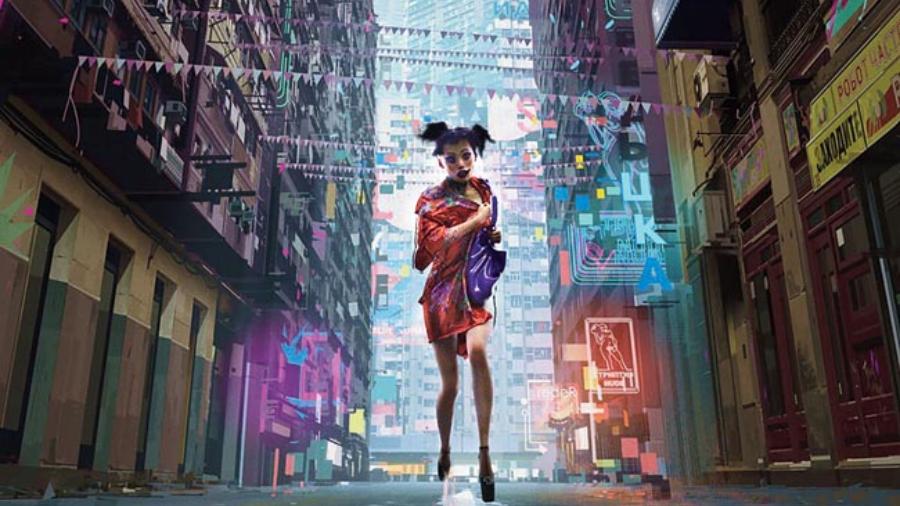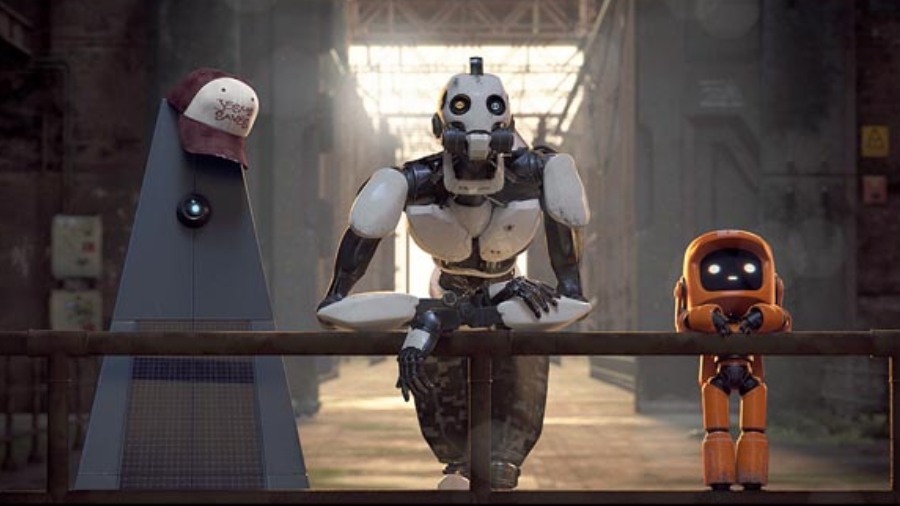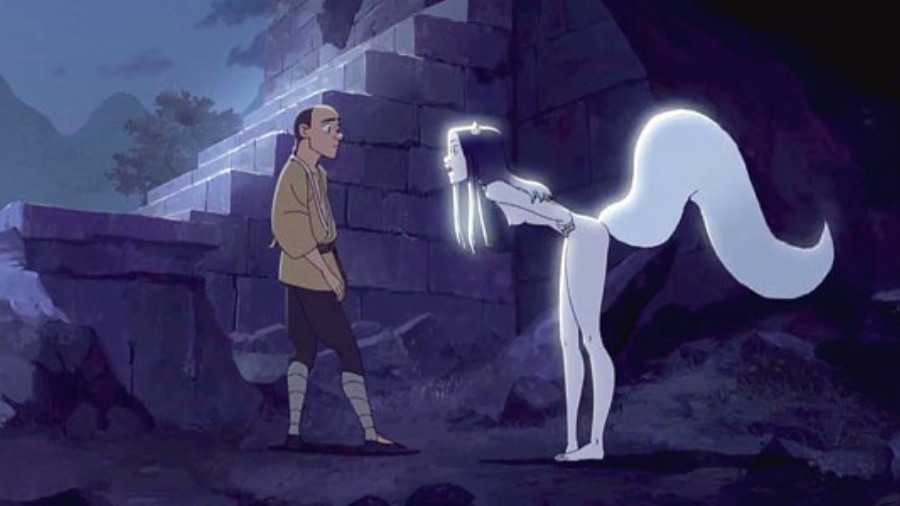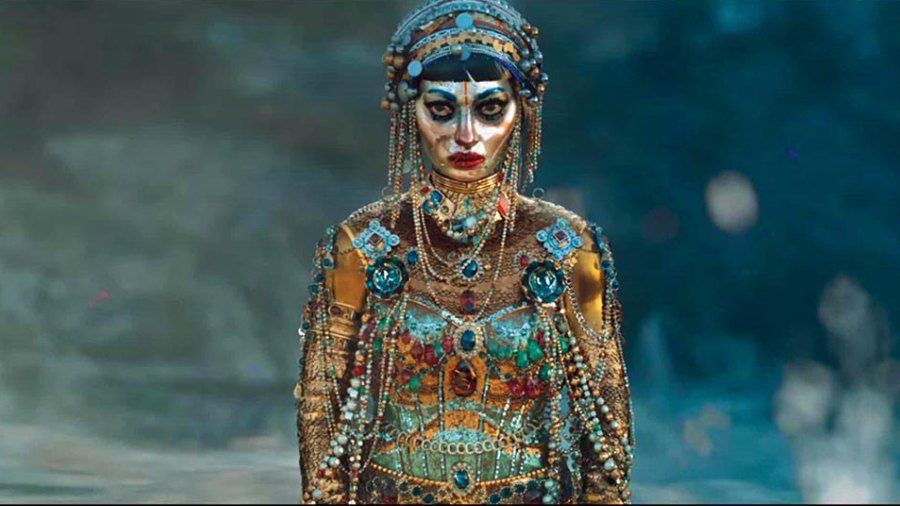Love Death + Robots is back with season 3 on Netflix and the thrill we felt on its announcement only reverberated across Twitter as people went gaga speaking about the cinematic excellence of the last episode, Jibaro. The superbly animated show that explores not just various techniques but also storytelling, sent an excited shiver down the spine when the first episode of this anthology had dropped on Netflix. With all of 18 episodes of seven to 17 minutes duration, Tim Miller’s series also had Joshua Donen, David Fincher and Jennifer Miller as producers and show runners. After an 11-year delay that saw Miller and Fincher’s remake of the sci-fi film Heavy Metal finally be distributed by Netflix –– only, instead of a film, it had to be an anthology. The series premiered in March 2019 and was renewed for a third season ahead of the second premier.
Season three ends with Jibaro, a tale where a mystical woman draped in gold emerges from the water and lets out a cry so shrill that it sends a nearby army into a frenzy. Murdering and plundering each other, the soldiers of the army lose life and sanity, except for one –– the deaf soldier Jibaro. What entails is 15 minutes of astounding viewing giddiness, as Siren and Jibaro dance a manic dance around each other, of attraction, pain and anger. Director Alberto Mielgo who made his debut on the first season of this very show with his story The Witness, comes back this year casually, carrying an Academy award for Best Animated Short Film for The Windshield Wiper. He has claimed that Jibaro was his attempt to speak about modern relationship, the toxicity that pervades us in complicated relationships and greed. The nine-episode third season had us thinking about the mass appeal of the show that saw participation of animation studios from various parts of the world.

The Witness
THE POLITICS IS PERSONAL
The animated nature of the show perhaps allows for fearless storytelling that perhaps a non-animated one does at a far slower pace. That could be the reason why each episode finds a way to make a political statement with its narration. In the fourth episode of this season, Night of the Mini Dead, two teenagers fornicating in a graveyard result in a zombie uprising that spreads like wildfire around the globe. Captured in aerial-view style, it’s hard not to draw parallels with the coronavirus leading up to the White House, which declares the launching of a nuclear weapon. As other countries follow suit, the earth self-immolates and the destruction of our entire planet reverberates as a mere comical fart amidst the galaxy. Each episode is an attack on the ‘big daddies’ of the world, belittling the world where big tech is building.
In the first episode of this season, a cat calls himself Elon Musk as he shoots off to Mars to avoid human extinction. Continuation of Three Robots from season one, Three Robots: Exit Strategies is directed by Patrick Osborne. From climate change to colonisation, the future of nuclear warfare to disillusioned world leaders, in Love, Death + Robots, the politics is personal.

Three Robots
THE ART IS SUBLIME
Produced by Blur Studio, the animation needs of the show surpassed geographical boundaries and witnessed participation from talents of various countries around the world. Mielgo’s Studio Pinkman.tv based out of Madrid had 75 people working on Jibaro. The need to expand animation beyond a certain age group meant freedom to expand in terms of creativity that would be promises made about the immense potential of the format. We came across a post by Katarzyna Olszewska from Poland on LinkedIn whose work as a senior character animator in the Mason’s Rat (season 3) was the third time collaborating on the show. Deep Fake (the technology that works on recreation of human faces digitally), which has only garnered negative response from the world for their usage in advertising and more, has been excellently used in creating characters that are difficult to discern as being animated. The cinematography of certain episodes have been compared to an LSD trip away on popular social media channels! When there are no financial and temporal constraints to art, the result is sublime and this show is standing proof.

Good Hunting
GENDER IS FLUID
The lack of defined gender roles in the various universes created by Miller lends immensely to the greatness of the project. However, this doesn’t stray away from the narratives, which include episodes like Oliver Thomas’s Good Hunting. In Good Hunting, a fox-like mythical Huli Jing who can also appear in beautiful human form, is unable to transform because of extreme pollution over the generations. In her human form, Yan befriends Liang and works the streets of Hong Kong soliciting sexual favours for a charge. However, her fate changes when a powerful man takes advantage of her and permanently changes her life for his own sexual demons. Transformed, Yan returns to the streets to protect vulnerable women from facing the streets the way she had to. This episode would perhaps be the marked end of the definition of gender roles in the show. The fluidic nature of gender is gloriously highlighted in the created universes, which are far from being utopian and yet seem pleasantly palatable.
TOO MUCH GORE
Our only complaint with the third season might be the excess of gore, sludge and bloodshed that is in every episode of this season. While the 18-episode first season had the opportunity to explore in terms of narratives, the halving of the season size leaves little room for variety. We missed the supreme storytelling of Zima Blue or Tim Miller’s Ice Age, or All Through the House. Season three became a visual spectacle that had us scraping our jaws off the floors but not the twisted thinking process that would keep us up at night. We can’t wait to find out what extremes the show will manage to reach, opening up a world of opportunities and possibilities for film-makers around the world.











